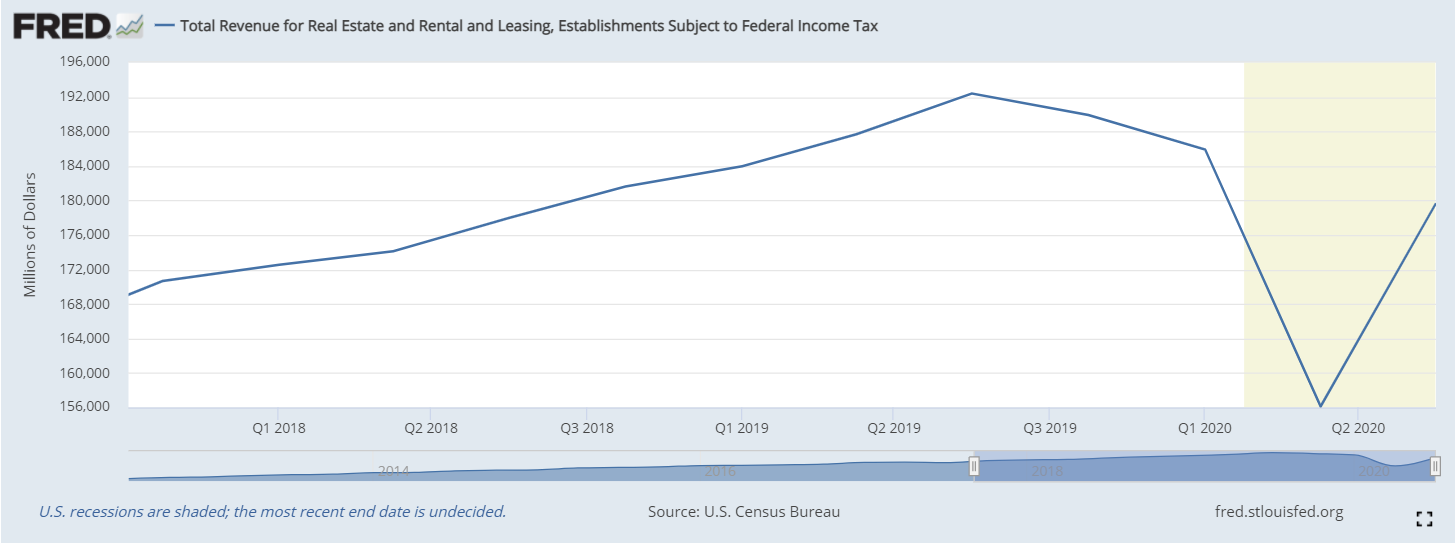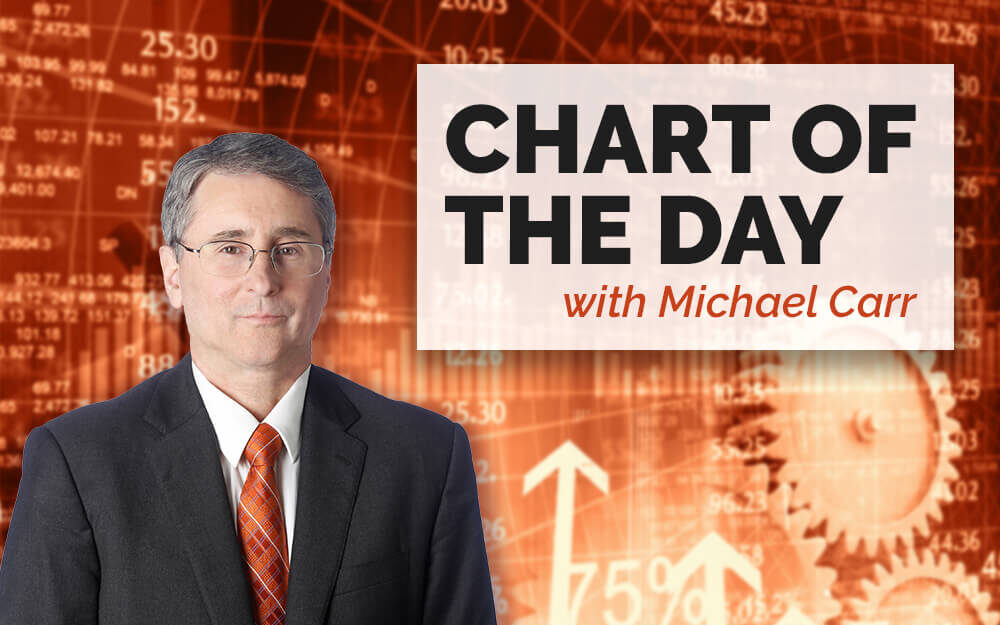There’s no doubt the pandemic affected the economy, but there is also little doubt the economy was headed for a slowdown even before the pandemic hit.
The impending slowdown shows up in several data series. Shown below is rental company revenue. In the fourth quarter of 2019, rental income dropped 3.4%. That was before the pandemic hit.
Real Estate and Rental Revenue Sank Before COVID-19

Source: Federal Reserve.
2 Problematic Outcomes for the Rental Market
This data only includes businesses that employ workers. It covers any rental property with employees, including apartments, individual homes (in some cases) and commercial real estate. It doesn’t include the small individual landlord renting a single home without any help from employees.
Despite its limitations, this data still offers an important insight into the state of the rental market. Landlords were already under pressure before the economy shut down.
The drop in income most likely indicates vacancies increased. That increase began at the end of 2019, months before shutdown orders were issued.
Vacancies put downward pressure on prices, and shutdowns magnified that pressure.
Remember that just because a building is vacant doesn’t mean there are no costs associated with it. Landlords still need to pay taxes and utilities for many properties. There are also costs for maintenance that building owners cannot defer.
But some maintenance, especially work that is more cosmetic than necessary, can be delayed — creating a backlog of work that could be a catalyst for inflation later.
If there is a continued rebound in rental income, there is a need to worry about inflation.
On the other hand, if there is no sustained recovery, there could be an increase in bankruptcies. This would follow the pattern we saw after the housing bubble burst in the mid-2000s. That led to a crash in the residential real estate market.
Either outcome is bad news for the economy.
Rental income shows there were serious problems in 2019. The pandemic compounded those problems. Now, policymakers face issues on several fronts, and the prospects of recovery are daunting.
Michael Carr is a Chartered Market Technician for Banyan Hill Publishing and the Editor of One Trade, Peak Velocity Trader and Precision Profits. He teaches technical analysis and quantitative technical analysis at the New York Institute of Finance. Mr. Carr is also the former editor of the CMT Association newsletter, Technically Speaking.
Follow him on Twitter @MichaelCarrGuru.




